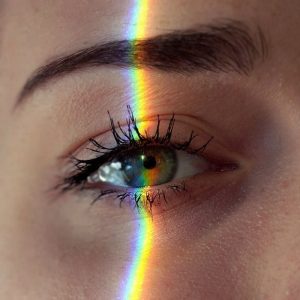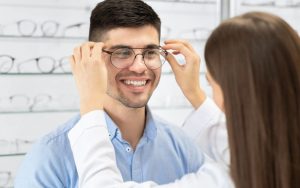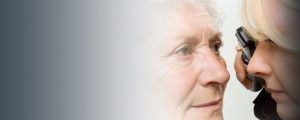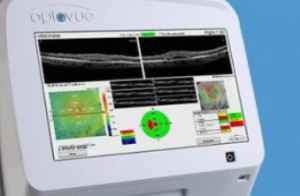Over 25% of the world’s population wears glasses.
Glasses are worn for the correction of blurry vision caused by a refractive error — which is by far one of the most prevalent healthcare issues today.
Here are some of the most frequently asked questions about refractive errors, which should provide some insight into why your eye doctor has prescribed glasses for you.
Q1: What is a refractive error?
Refractive error refers to a condition in which light that enters the eye is focused incorrectly, causing blurry vision.
To achieve clear sight, the light entering the eye needs to be focused directly onto the retina, the nerve layer at the back of the eye.
Before light reaches the retina, it is first focused by the cornea, the clear dome at the front of the eye. Then, further focusing occurs at the lens, on its way to the retina. The lens is responsible for changing focus, so we can see near and distant objects clearly.
There are a number of reasons why light might not focus correctly, including:
- Inability of the lens to accurately change focus
- Shape of the cornea
- Overall length of the eye
The four most common refractive errors are: myopia (nearsightedness), hyperopia (farsightedness), astigmatism and presbyopia.
Q2: How is a refractive error diagnosed?
Eye doctors are trained to detect and diagnose refractive errors as part of a routine comprehensive eye exam.
During your eye exam, your eye doctor will use a process known as a refraction.
This process will help the optometrist determine how your eyes focus and if you might need glasses or contact lenses.
The first step of the refraction allows the eye doctor to obtain an objective measure of your eye’s focusing ability and an initial idea of your optical prescription.
The next step involves the use of a phoropter, which allows the eye doctor to rely on your input to get an accurate measurement of your prescription.
If your eye doctor feels you might need a separate prescription for near vision, such as with presbyopia, they will perform a near vision test to round out your refraction.
Q3: What is myopia?
Myopia is also popularly known as nearsightedness. It is a type of refractive error caused by either the eye being too long from front to back, or the corneal curve being too steep.
If you notice that your distance vision is blurry, such as when driving or watching TV, you most likely have myopia.
Myopia causes light entering the eye to be focused at a point in front of the retina, causing the image to blur by the time it reaches the retina, at the back of the eye.
A person with myopia will notice that as objects get further away, they appear blurrier, whereas things that are close by remain in focus.
SEE RELATED: Why Do Optometrists Use Eye Charts?
If you are experiencing blurry vision, schedule an eye exam with an eye doctor near you.
Q4: What is hyperopia?
Hyperopia is often referred to as farsightedness.
Hyperopia causes a difficulty reading or maintaining focus for extended periods of time.
Hyperopia is a refractive error that can stem from a number of issues, including:
- Eye length being too short
- Cornea being too flat in shape
A person with hyperopia will notice that objects come into focus as they get further away, but close-up images and objects seem blurry.
Q5: What is presbyopia?
Presbyopia is a refractive error that occurs as a natural part of aging, with every person experiencing symptoms to a smaller or larger degree.
Presbyopia occurs when the lens of the eye begins to harden, losing the elasticity that makes focusing possible.
If you are in your 40’s, and find that reading small print has become harder to see clearly, this is likely the beginning of presbyopia.
Presbyopia makes near objects seem blurry and distorted. A person experiencing presbyopia may feel the need to hold reading material at arm’s length to see the text or images more clearly.
Q6: What is astigmatism?
Astigmatism is a common refractive error in which the cornea of the eye is shaped more like an oval than the normal spherical shape.
A person with astigmatism may experience blurry or double vision, as well as eye strain and headaches.
Astigmatism causes multiple refraction points as light enters the eye, resulting in blurry or double vision at both near and far distances.
Q7: Why do I need glasses or contact lenses?
The most common ways to treat refractive errors are with eyeglasses and contact lenses.
The function of these optical corrections is to provide you with clear and comfortable vision.
Myopia, hyperopia and astigmatism will require single prescription eyeglasses, whereas presbyopia may require bifocals, multifocals or progressive lenses.
For severe astigmatism, custom-made contact lenses or scleral contact lenses may be prescribed to address the unique curvature of the astigmatic cornea or lens.
If your child’s myopia is worsening, speak with your eye doctor about Myopia Management, a customized program used to stop or slow down the rate of myopia progression.
Laser refractive surgery is a permanent option for correcting refractive errors, though this procedure is only available to adults whose prescription has remained stable for at least two years.
LEARN MORE: Guide to Eye Exams
If your vision seems blurry, contact an eye doctor near you for a comprehensive eye exam.
Here are our top 7 FAQs about why people need to wear glasses.
If your vision is blurry, there are a range of treatment options that can help improve your vision clarity… and your quality of life.









